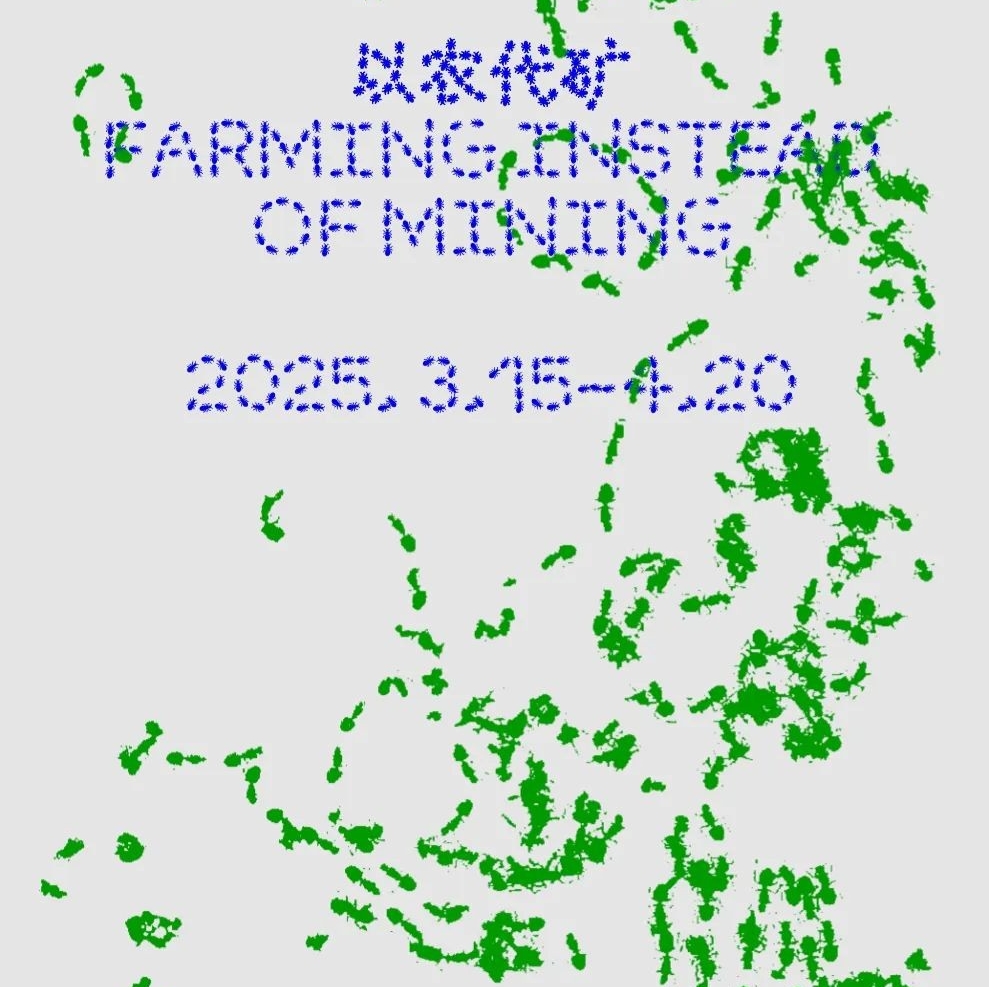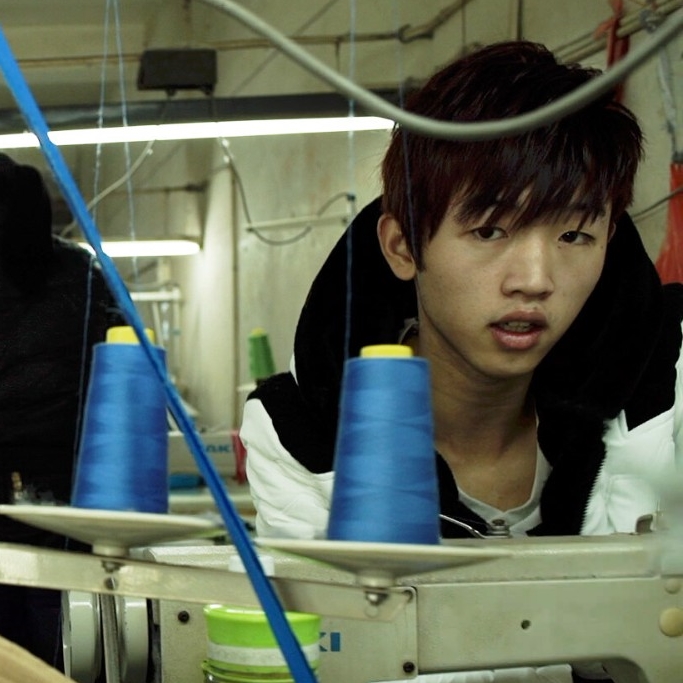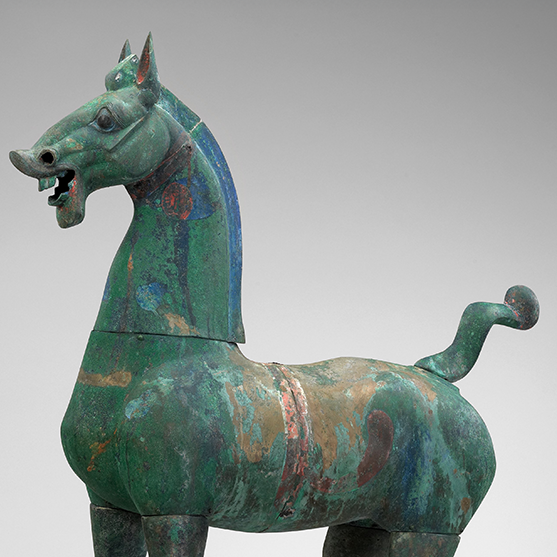 Courtesy Lisson Gallery.
Courtesy Lisson Gallery.
Lisson Gallery will present Marina Abramović's first exhibition with the gallery in China following up on her successful 2018 presentation at The Light Society, Beijing. This new exhibition brings together a selection of works from the artist’s Transitory Objects series, alongside photography from her groundbreaking performances in 1970s, and a film installation. As one of the most significant artists internationally, Abramović has earned widespread acclaim over the past 50 years as a pioneer of performance art. Following this exhibition in Shanghai is the artist’s highly anticipated retrospective at the Royal Academy of Arts, London, opening in September 2023.
 Marina Abramović, White Dragon, 1989.
Marina Abramović, White Dragon, 1989.
Oxidized Copper, Obsidiana, 250x52.3x46cm.
This exhibition in Shanghai is a landmark moment for the artist as a return to the country where she enacted one of her most iconic performances: her walk across the Great Wall in China with Ulay in 1988. Abramović was inspired by this very experience – in particular the shifting states and diverse minerals present in the ground on which she walked – to create the Transitory Objects series, which she began on her return from China and continued to develop over the following decades. The Transitory Objects series is also meaningful as it was the artist’s first series of work that involves the public’s participation. Engaging with materials such as quartz, crystals, copper, iron and wood, Abramović invites the audience to directly interact with these works, and to receive their energy – using it as a means of transit to a meditative state of consciousness. As Abramović once said, “the artist’s function is to present the work and deliver it to the public, so the public can bring it to completion”.

Marina Abramović, Stromboli I, 2002.
DVD, single screen projection, 19.29 minutes, loop.
In addition, Abramović presents the single screen installation, Stromboli 1 (2002), titled after an island north of Sicily that is the only permanently active volcano in Europe. The installation shows static black and white close-up images of Abramović lying on the shores of the sea, her eyes closed, facing the sky. The artist remains silent and motionless for almost 20 minutes until the last wave drowns her for a short moment. In reaction to the rising ebb and flow of the tides, she changes the position of her head.
Also featured in the presentation are two black and white photographs, highlighting the durational bodily experimentations that committed to single actions, offering the audience an opportunity to re-live some of Abramović’s most physically and mentally demanding performances, withstanding pain and exhaustion in her quest for emotional liberation and mind-altering transformation.

Marina Abramović, Art Must Be Beautiful, Artist Must Be Beautiful, 1975.
Black and white video with sound, 23 minutes 36 seconds.
Consisting of 20 frames of photography, Art Must Be Beautiful, Artist Must Be Beautiful (1975/2010) documents a scripted scenario where Abramović parts her hair using both hands, with a metal brush in one hand, and a metal comb in other while continuously repeating “Art must be beautiful, artist must be beautiful” until she is repeatedly damaging both her own face and hair. The performance is an example of how, in the early years of performance art, female artists used their own bodies to challenge the institution of art and the notion of beauty. Alongside this is another series of photographic works entitled Freeing the Voice (1975/2014), taken during a 3-hour original performance at the Student Cultural Center, Belgrade in 1975. The artist is seen lying on a white mattress with her head tilted back, screaming, until she loses her voice. Attempting to achieve a mental cleansing through pushing the limit of the three main faculties of expression – voice, language and body – her scream eventually becomes a sound object, breaking free from the body and filling the space independently.
About the Artist
Since the beginning of her career in Belgrade during the early 1970s, Marina Abramović has pioneered performance as a visual art form. She created some of the most important early works in this practice, including Rhythm 0 (1974), in which she offered herself as an object of experimentation for the audience, as well as Rhythm 5 (1974), where she lay in the centre of a burning five-point star to the point of losing consciousness. These performances married concept with physicality, endurance with empathy, complicity with loss of control, passivity with danger. They pushed the boundaries of self-discovery, both of herself and her audience. They also marked her first engagements with time, stillness, energy, pain, and the resulting heightened consciousness generated by long durational performance.

Marina Abramović, The Artist is Present, 2010.
Performance, The Museum of Modern Art, New York, 3 months.
Image Courtesy Marina Abramović and Sean Kelly Gallery, NY.
The body has always been both her subject and medium. Exploring her physical and mental limits in works that ritualise the simple actions of everyday life, she has withstood pain, exhaustion and danger in her quest for emotional and spiritual transformation. From 1975-88, Abramović and the German artist Ulay performed together, dealing with relations of duality. She returned to solo performances in 1989 and for The Artist Is Present (2010) she sat motionless for at least eight hours per day over three months, engaged in silent eye-contact with hundreds of strangers one by one.
Abramović was one of the first performance artists to become formally accepted by the institutional museum world with major solo shows taking place throughout Europe and the US over a period of more than 25 years. Her first European retrospective ‘The Cleaner’ was presented at Moderna Museet in Stockholm, Sweden in 2017, followed by presentations at the Louisiana Museum of Modern Art in Copenhagen, Denmark, Henie Onstad, Sanvika, Norway (2017), Bundeskunsthalle, Bonn, Germany (2018), Centre of Contemporary Art, Torun (2019), and Museum of Contemporary Art Belgrade, Serbia (2019). The artist's operatic project '7 Deaths of Maria Callas' debuted at the Bayerische Staatsoper, Munich, Germany in 2020, and toured to Palais Garnier, Paris, France and the Greek National Opera, Athens, Greece in 2021. Further performances are scheduled for spring 2022 at Deutsche Oper Berlin, Germany (8-10 April) and Teatro di San Carlo, Naples, Italy (13-15 May). In 2023, Abramović will be the first female artist to host a major solo exhibition in the Main Galleries of the Royal Academy of Arts in London. Select solo exhibitions include ‘Akış / Flux’, Sakıp Sabancı Museum, Istanbul, Turkey (2020); ‘As One’, NEON + MAI, Benaki Museum, Athens, Greece (2017); ‘The Space In Between Marina Abramović and Brazil’, SXSW, Austin, Texas, USA (2016); ‘Terra Comunal – Marina Abramović + MAI’, SESC, Pompeia, São Paulo, Brazil (2015); ‘512 Hours’, Serpentine Gallery, London, UK (2014); ‘Holding Emptiness’, Contemporary Art Center, Malaga, Spain (2014); ‘‘The Life and Death of Marina Abramović’ (with Robert Wilson), Park Avenue Armory, New York, NY, USA (2013); ‘Balkan Stories’, Kunsthalle Wien, Vienna, Austria (2012); ‘The Abramović Method’, Padiglione d'Arte Contemporanea, Milan, Italy (2012); ‘The Artist Is Present’, Garage Center for Contemporary Culture, Moscow, Russia (2011); ‘The Artist is Present’, Museum of Modern Art, New York, NY, USA (2010); and ‘Seven Easy Pieces’ at the Guggenheim Museum, New York, NY, USA (2005). Abramović has participated in many large-scale international exhibitions including the Venice Biennale (1976, 1997) and Documenta VI, VII and IX, Kassel, Germany (1977, 1982 and 1992). She has also established the MAI (Marina Abramović Institute) to support the future exploration and promotion of performance art.
About the Exhibition
Duration: 28 April – 22 July 2023
Venue: Lisson Gallery Shanghai
Location: 2/F, 27 Huqiu Road, Shanghai
Opening Times: Tuesday – Saturday: 11:00am – 6:00pm
Courtesy Lisson Gallery.




























